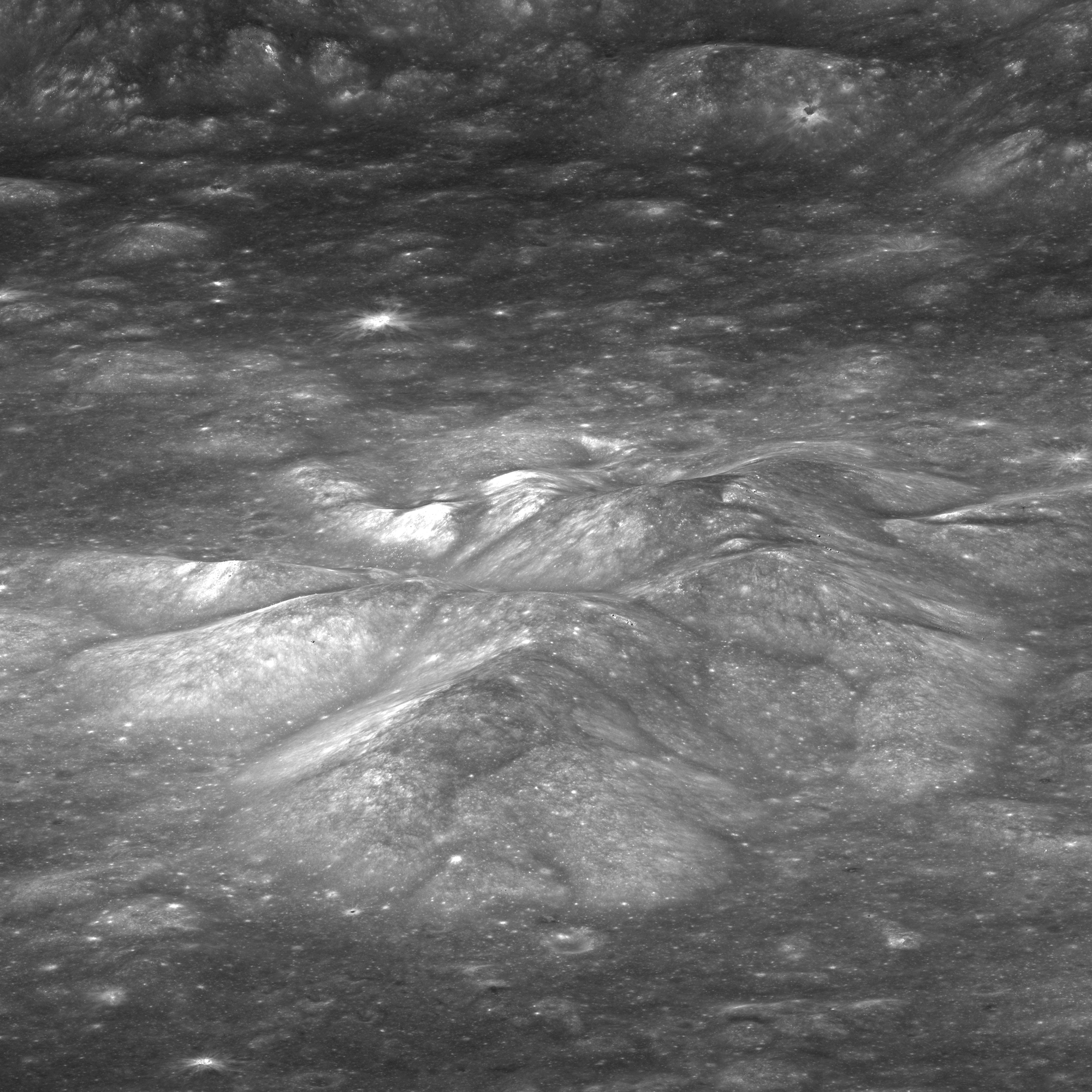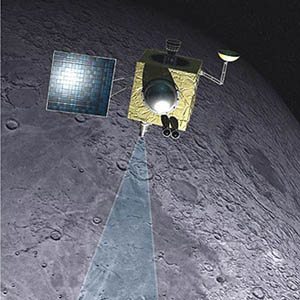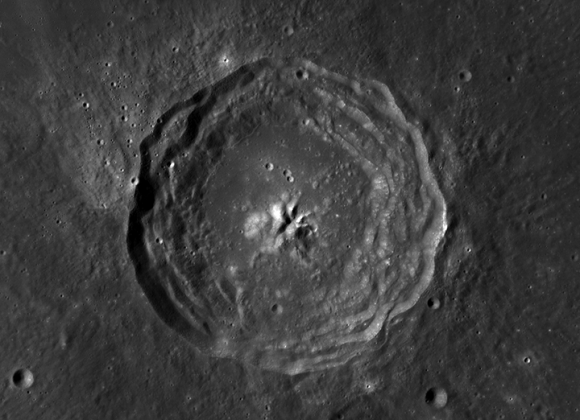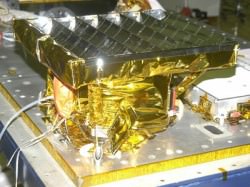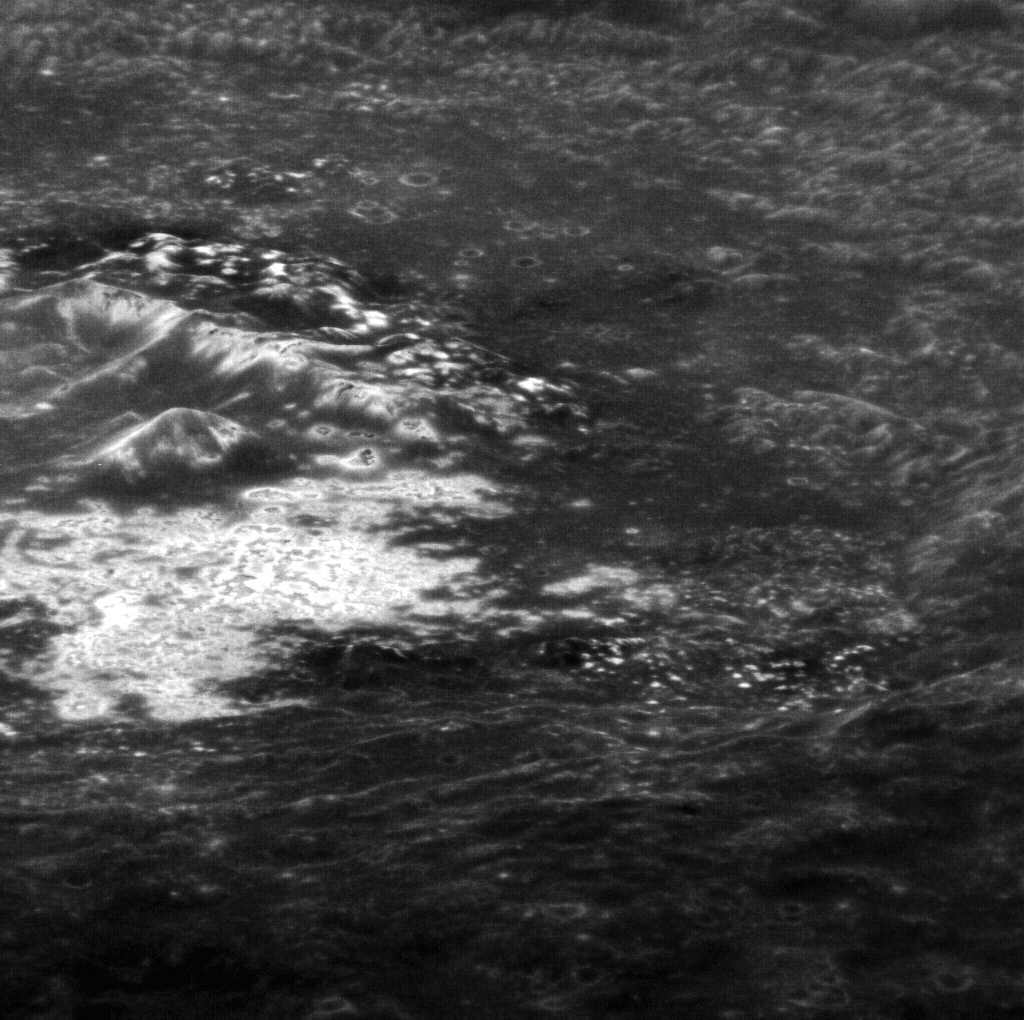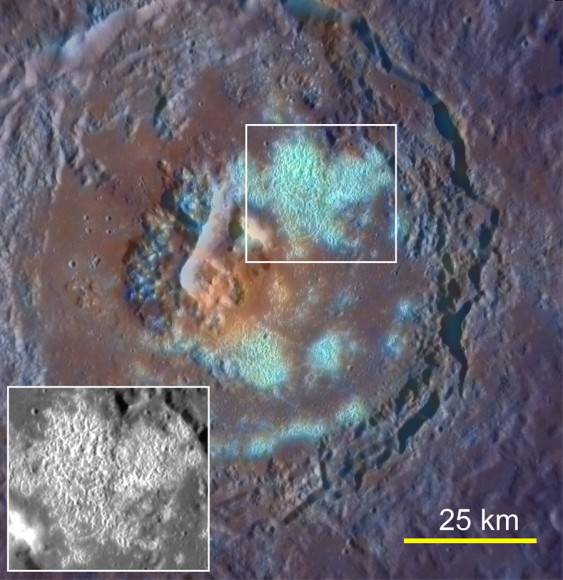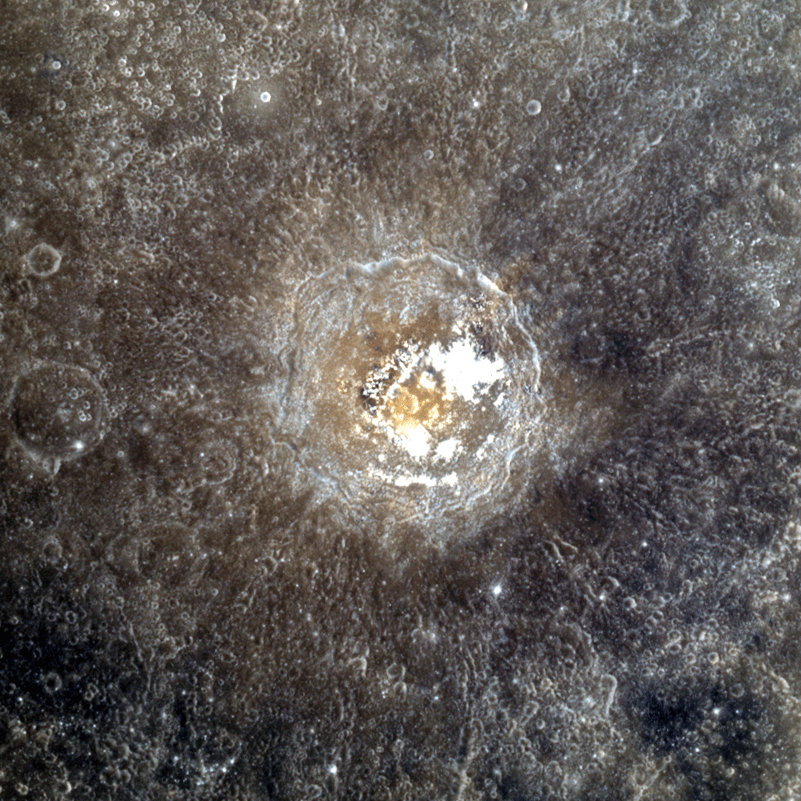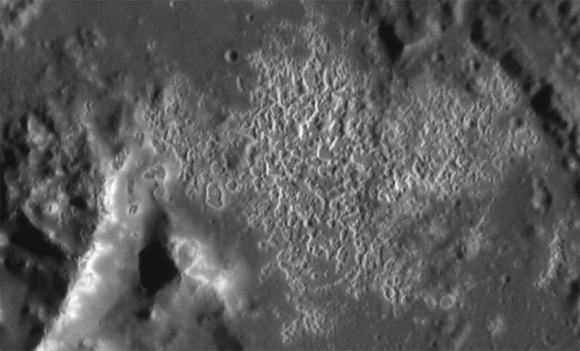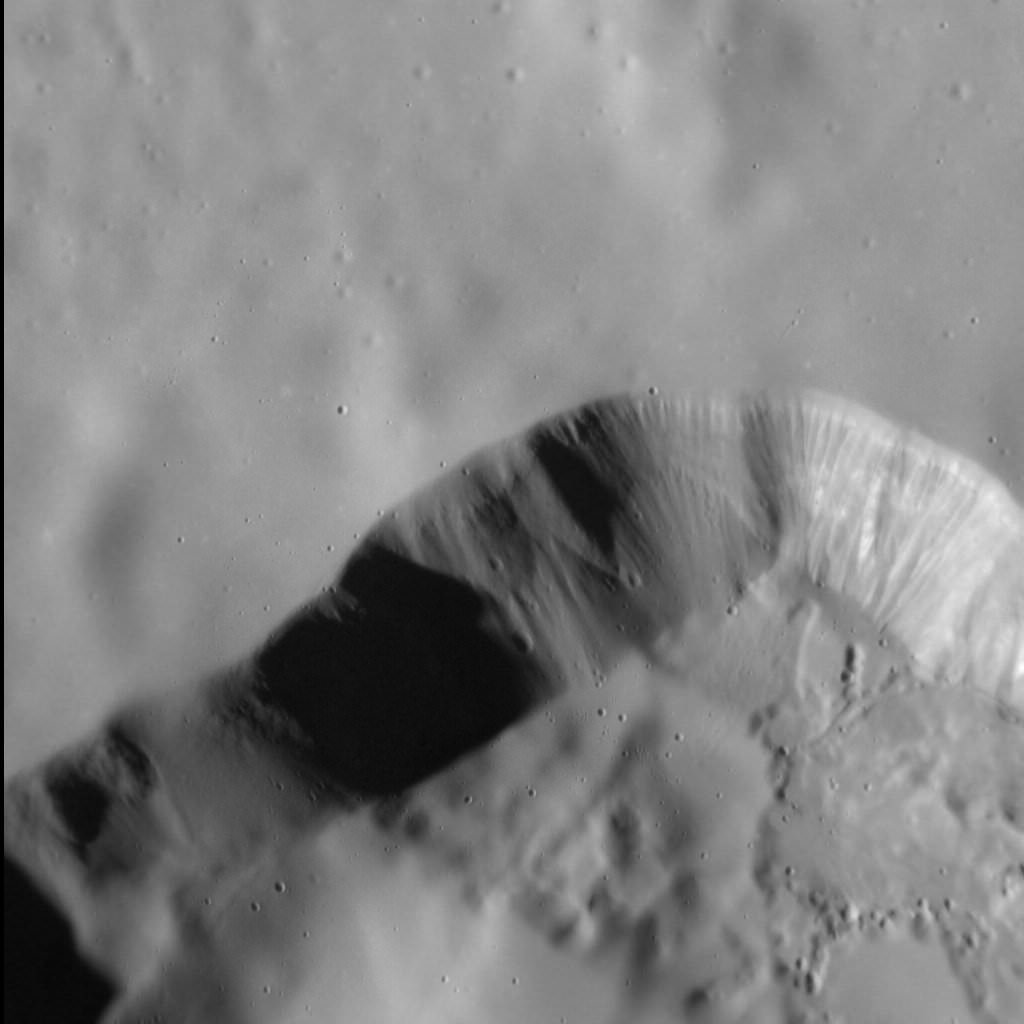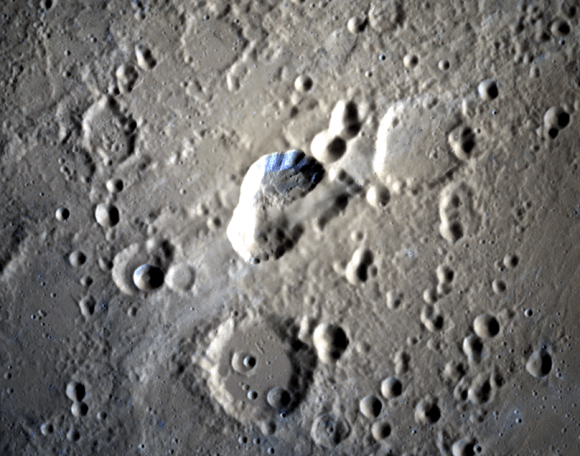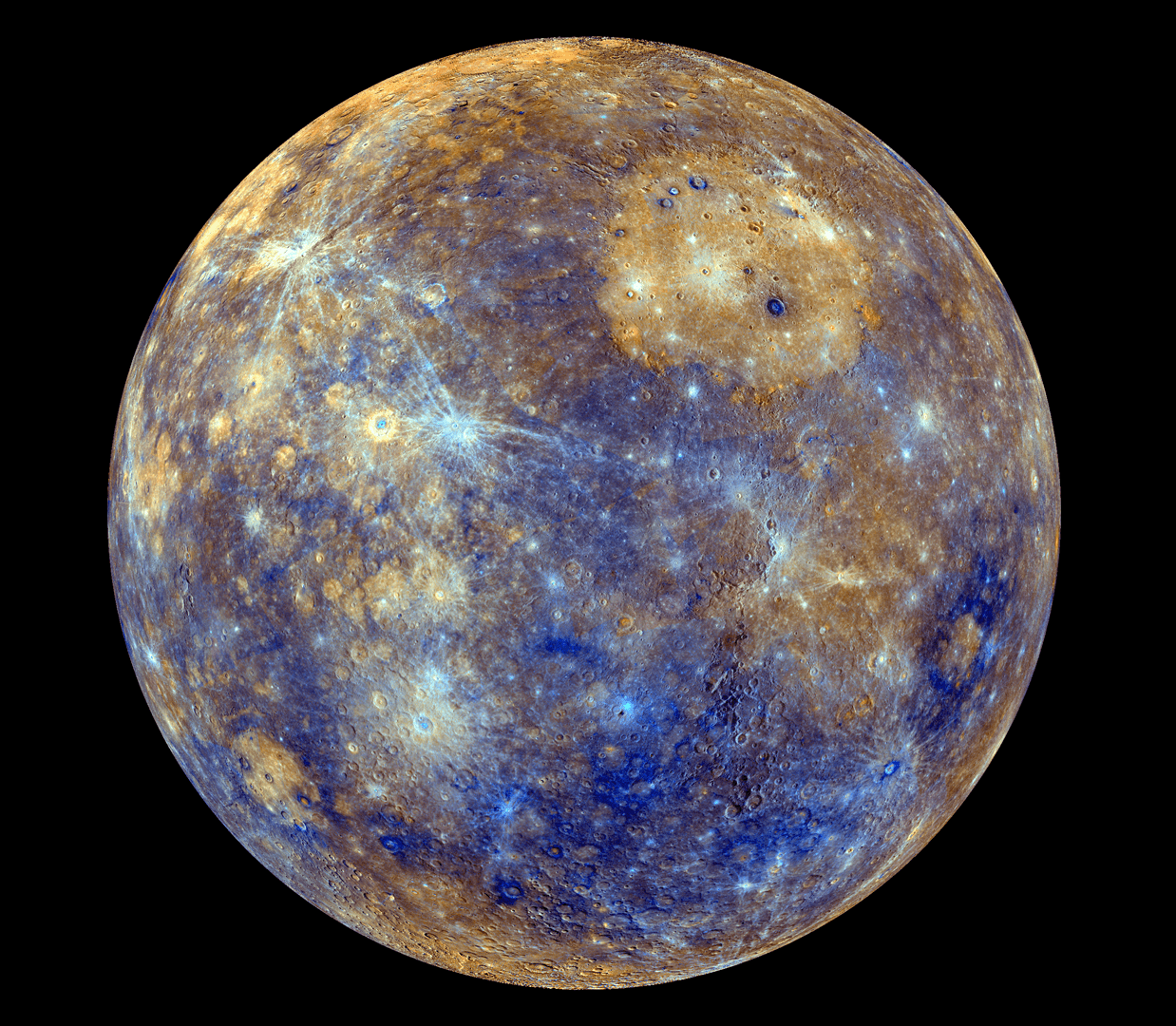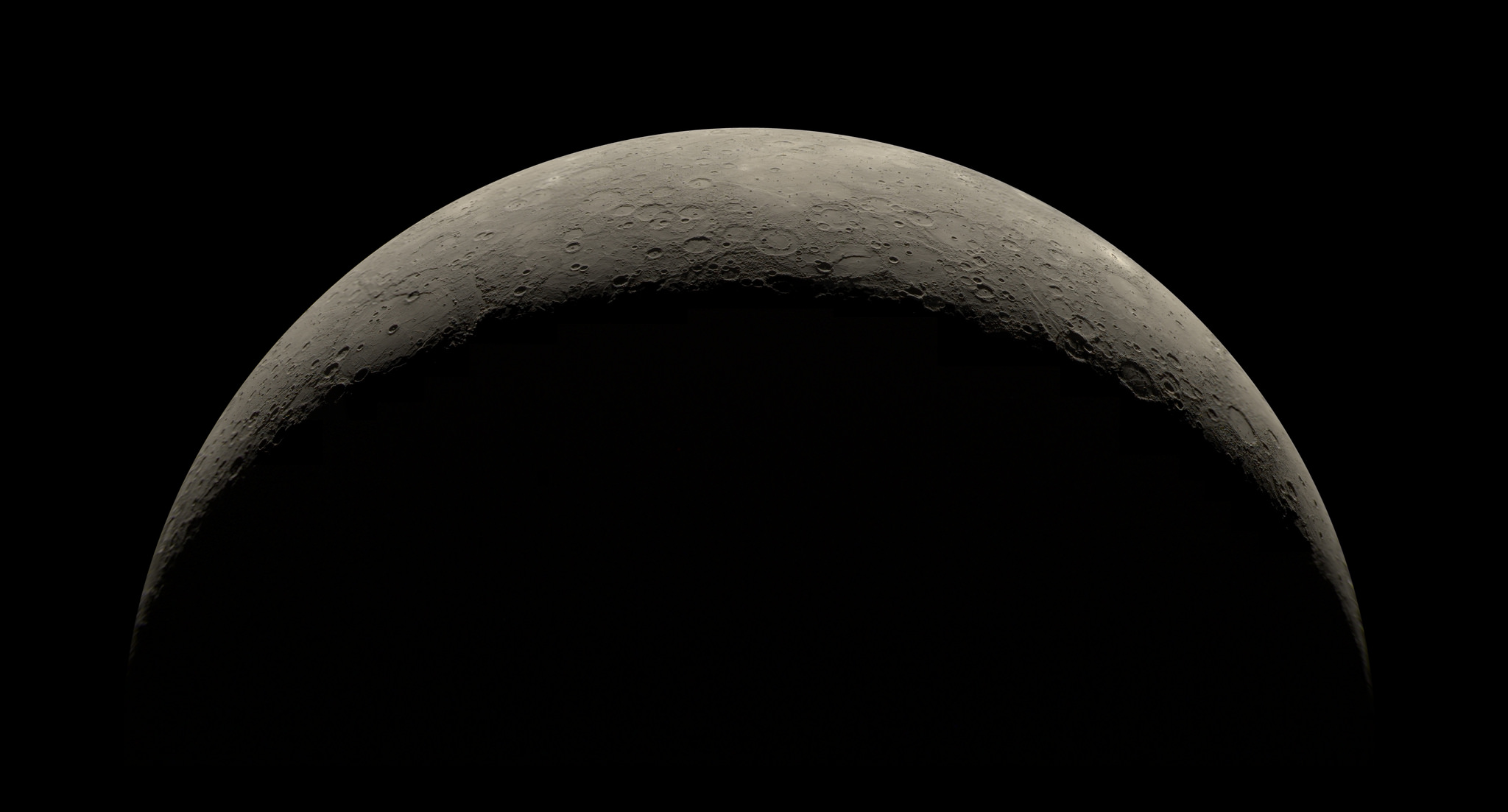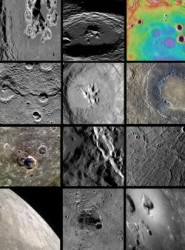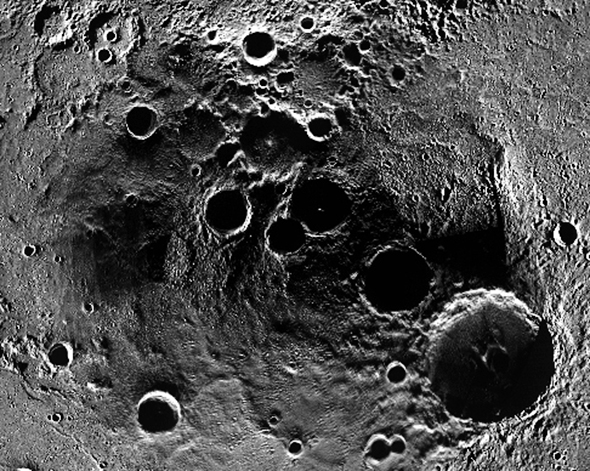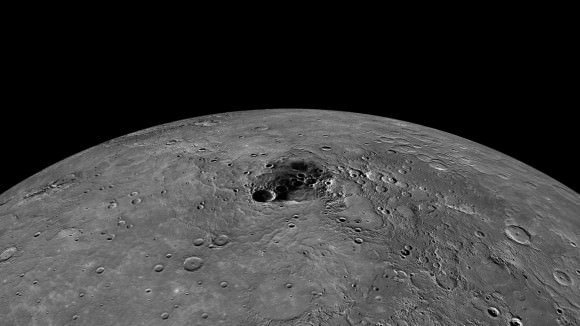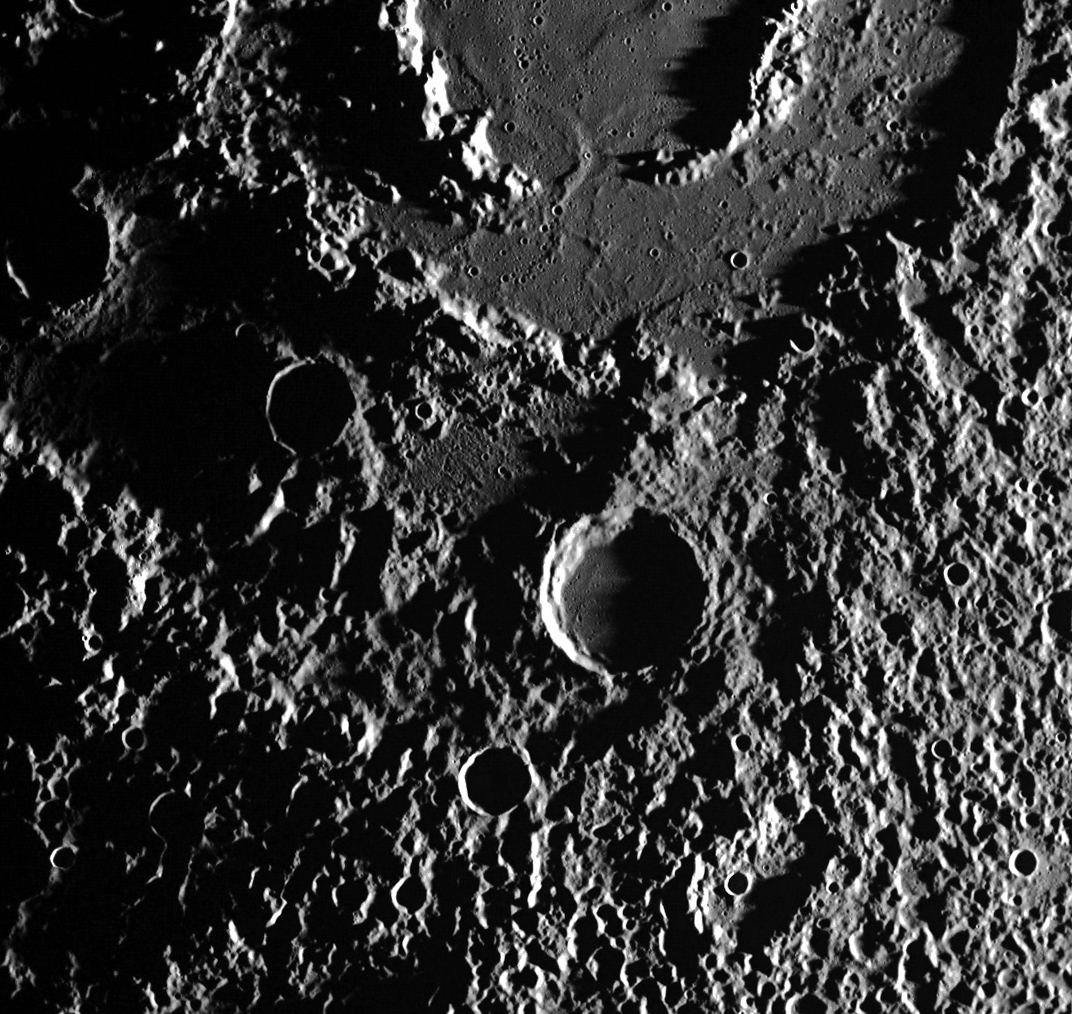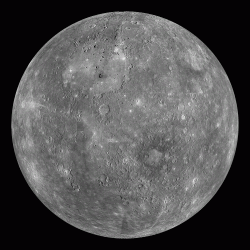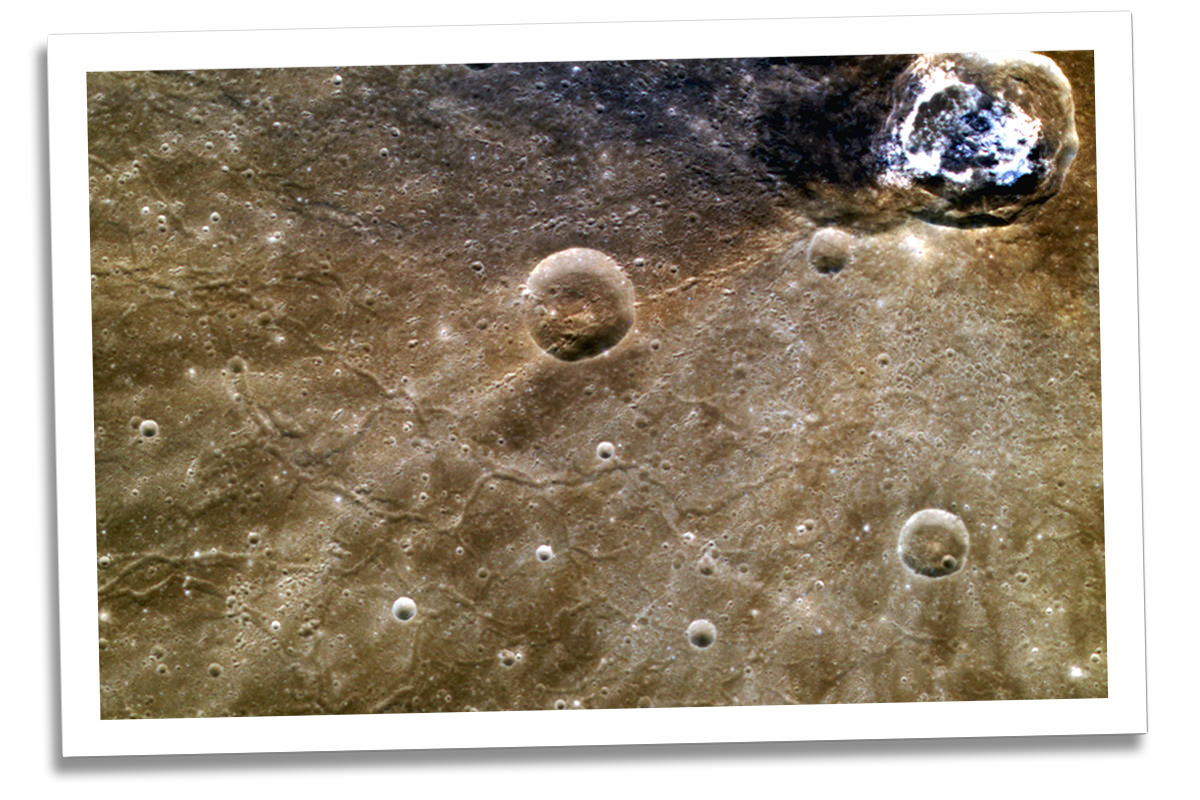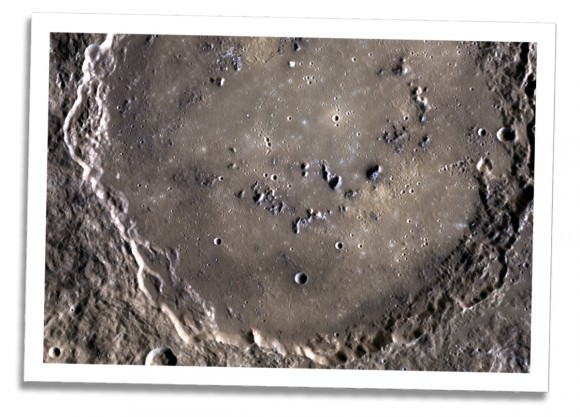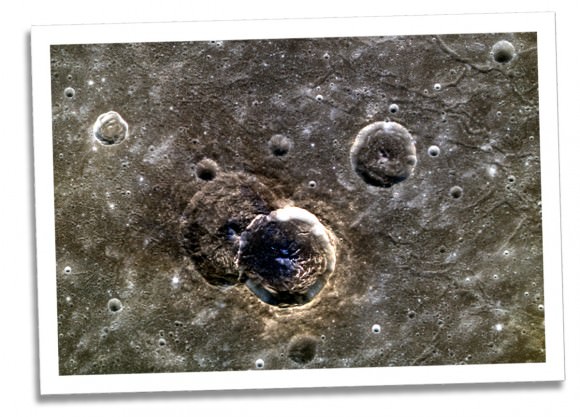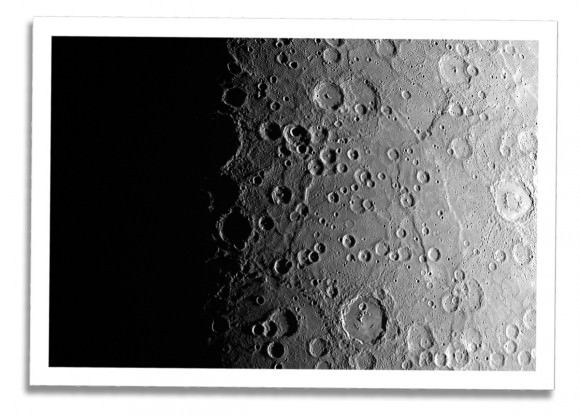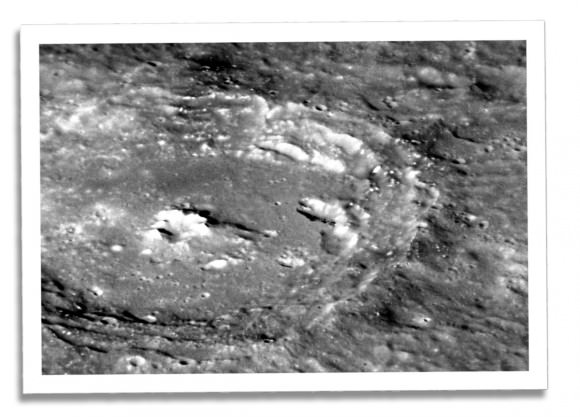It’s been nearly two and a half years since the NASA-sponsored MESSENGER mission entered orbit around Mercury — the first spacecraft ever to do so — and today the MESSENGER team celebrated the 1,000th featured image on the mission site with a mosaic of discovery highlights, seen above.
“I thought it sensible to produce a collage for the 1,000th web image because of the sheer volume of images the team has already posted, as no single picture could encompass the enormous breadth of Mercury science covered in these postings,” explained MESSENGER Fellow Paul Byrne, of the Carnegie Institution of Washington. “Some of the images represent aspects of Mercury’s geological characteristics, and others are fun extras, such as the U.S. Postal Service’s Mercury stamp. The ‘1,000’ superimposed on the collage is a reminder of the major milestone the team has reached in posting 1,000 featured images — and even a motivation to post 1,000 more.”
See the very first image MESSENGER obtained from orbit below:
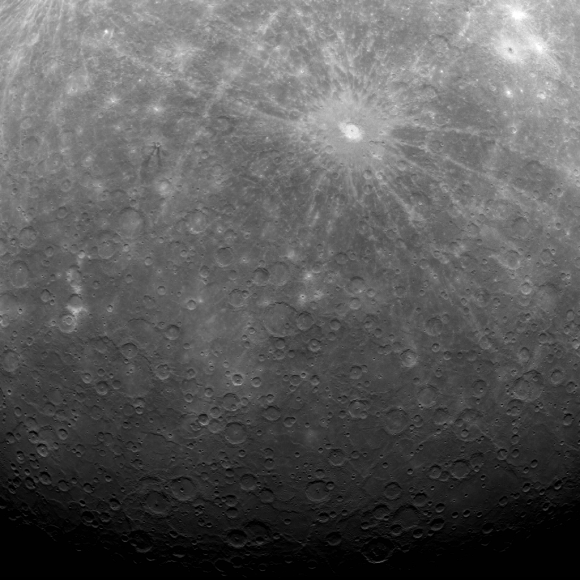
“During this two-year period, MESSENGER’s daily web image has been a successful mechanism for sharing results from the mission with the public at large,” said Nancy Chabot, MDIS Instrument Scientist at the Johns Hopkins University Applied Physics Laboratory (APL). Chabot has been leading the release of web images since MESSENGER’s first flyby of Mercury in January 2008.
Read more: 5 Mercury Secrets Revealed by MESSENGER
“The first image I released was this one, as MESSENGER approached Mercury for the mission’s first Mercury flyby,” said Chabot. “Mercury was just a small crescent in the image, but it was still very exciting for me. We were obtaining the first spacecraft images of Mercury since Mariner 10 transmitted its final image in 1975, and this was just the beginning of the flood of images that followed.”
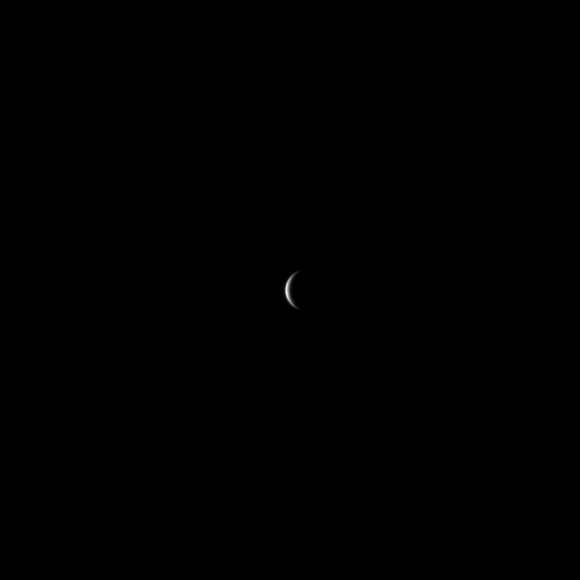
The herculean effort involved in posting a new image every business day was made possible by a small team of scientists in addition to Chabot and Byrne, including APL’s David Blewett, Brett Denevi, Carolyn Ernst, Rachel Klima, Nori Laslo, and Heather Meyer.
“Creating images and captions for the MESSENGER Image Gallery has been fun and interesting,” Blewett said. “Working on a Gallery release gives me a chance take a break from my regular research and look all around Mercury’s surface for an image that the general public might find to be engaging from a scientific, artistic, or humorous perspective (and sometimes all three!).”
Watch: Take a Spin Around Mercury
“The posting of the 1,000th image of Mercury on our web gallery is a wonderful benchmark, but there’s much more to come,” adds MESSENGER Principal Investigator Sean Solomon of Columbia University’s Lamont-Doherty Earth Observatory. “MESSENGER’s altitude at closest approach is steadily decreasing, and in a little more than six months our spacecraft will be able to view Mercury at closer range than ever before with each orbit. Stay tuned!”
Source: MESSENGER news release
Image credits: NASA/Johns Hopkins University Applied Physics Laboratory/Carnegie Institution of Washington
MESSENGER (MErcury Surface, Space ENvironment, GEochemistry, and Ranging) is a NASA-sponsored scientific investigation of the planet Mercury and the first space mission designed to orbit the planet closest to the Sun. The MESSENGER spacecraft launched on August 3, 2004, and entered orbit about Mercury on March 17, 2011 (March 18, 2011 UTC).


